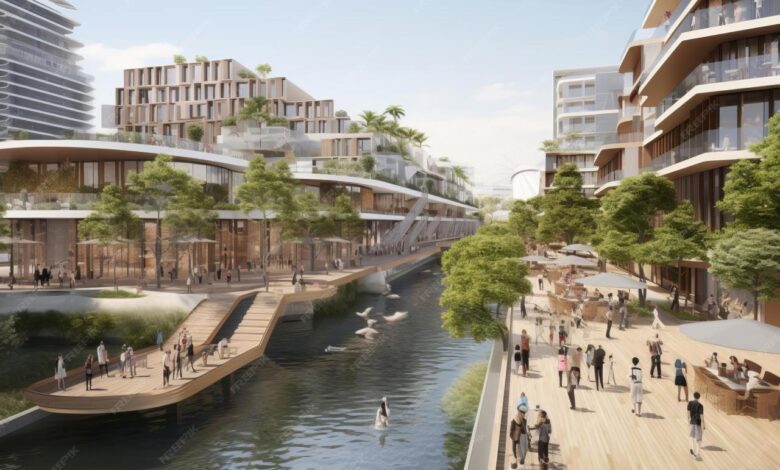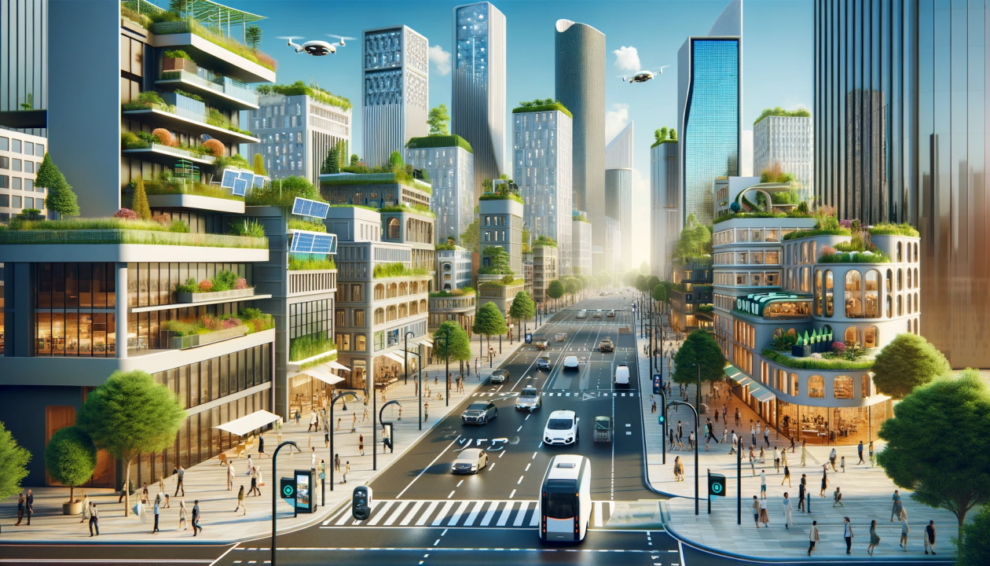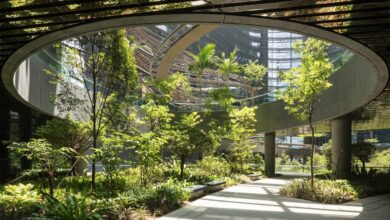Shaping Tomorrow’s World: Smart Urban Planning

The very fabric of human civilization is intrinsically woven into the structures and spaces of its cities, which serve not merely as concentrations of buildings, but as dynamic, complex organisms that pulse with economic activity, cultural exchange, and intricate social interaction.
As global populations continue to surge and urbanization accelerates at a breakneck pace, the challenges facing these metropolitan centers—ranging from crushing traffic congestion and rampant resource consumption to social inequity and environmental degradation—have reached a critical juncture, demanding revolutionary and integrated solutions.
The traditional methods of city growth, often characterized by fragmented planning and slow, bureaucratic responsiveness, are simply insufficient to manage the complexity of modern urban life, forcing planners and architects to embrace a more holistic, data-driven approach.
This intellectual shift has given rise to the concept of the Smart City, a visionary model where cutting-edge technology, particularly the Internet of Things (IoT), Artificial Intelligence (AI), and massive data analytics, is seamlessly integrated into every layer of the urban environment to enhance efficiency, sustainability, and the overall quality of life for its residents.
Successfully designing these next-generation urban centers requires blending the timeless principles of good architectural and urban design—focusing on human scale, walkability, and vibrant public spaces—with the transformative power of digital intelligence, creating responsive habitats that can self-optimize and adapt to the real-time needs of their inhabitants.
Understanding this fusion of physical planning and digital connectivity is key to grasping how we will not just manage, but actually improve, the chaotic yet exciting experience of 21st-century city living.
The Foundation: Traditional Urban Planning Principles

Before technology can make a city “smart,” it must first be “well-designed.” Modern urban planning, rooted in concepts developed over the last century, focuses on creating livable, functional, and equitable human environments.
1. Core Concepts of Urban Design
Good urban design focuses on making cities legible, safe, and enjoyable for pedestrians.
A. Mixed-Use Development
A. This principle advocates for integrating residential, commercial, office, and recreational spaces within close proximity.
B. It reduces reliance on cars by making essential services and workplaces walkable or bikeable.
C. Mixed-use zones create vibrant, active neighborhoods throughout the day and evening, fostering a stronger sense of community.
B. Human Scale and Walkability
A. Planners prioritize streets and public spaces designed to be comfortable and engaging for pedestrians, not just vehicles.
B. This includes features like wide sidewalks, street-level storefronts, trees for shade, and safe crossings.
C. Buildings are often designed to a human scale, ensuring that heights and facades do not overwhelm the individual on the street.
C. Public Space and Green Infrastructure
A. Parks, plazas, and public squares are essential components of a city, acting as vital social and cultural gathering points.
B. Green Infrastructure—such as urban forests, green roofs, and permeable pavements—is integrated to manage stormwater runoff naturally and mitigate the urban heat island effect.
C. These spaces provide psychological relief and ecological benefits in dense urban settings.
Pillar One: The Anatomy of a Smart City
A Smart City uses digital technology to gather, analyze, and apply data to improve the management of urban assets and services. It is about making the city’s infrastructure cognitive.
1. The Internet of Things (IoT) as the Nervous System
The vast network of connected devices forms the sensory system of the Smart City, gathering real-time environmental data.
A. Embedded Sensor Networks
A. Thousands of small IoT sensors are deployed across the city in streetlights, traffic signals, utility meters, and waste bins.
B. These sensors collect continuous data on air quality, noise levels, temperature, and resource consumption.
C. This data is the “blood flow” of the smart city, providing planners with an immediate, accurate snapshot of urban conditions.
B. Smart Utilities and Resource Management
A. Smart electric grids use sensors to balance electricity load dynamically, preventing blackouts and optimizing energy distribution.
B. Smart water meters detect leaks instantly within the underground piping network, drastically reducing water loss.
C. Smart waste bins signal when they are full, allowing collection routes to be optimized based on need rather than a fixed schedule.
2. Artificial Intelligence (AI) as the Brain
AI and Machine Learning (ML) are the critical components that process the massive IoT data streams and translate them into actionable, autonomous decisions.
A. Traffic and Mobility Optimization
A. AI analyzes real-time data from traffic cameras and road sensors to predict congestion bottlenecks.
B. It dynamically adjusts traffic light timings across the city to optimize vehicle flow, reducing commute times and emissions.
C. This system also prioritizes public transit vehicles and emergency services, ensuring smoother movement across the network.
B. Predictive Public Safety
A. AI algorithms analyze historical crime patterns, emergency calls, and environmental factors to predict areas most likely to require public safety resources.
B. This allows police and emergency medical services to allocate resources more efficiently and proactively, potentially reducing response times.
C. AI also enhances surveillance by flagging anomalous activity in public spaces, assisting human monitors.
C. Autonomous Infrastructure Response
A. AI manages the response of smart buildings and utilities, predicting maintenance failures before they occur.
B. It can analyze sensor data from bridges and other infrastructure to detect subtle structural degradation, flagging the need for predictive maintenance.
C. This moves city management from a reactive, fix-it-when-it-breaks model to a proactive, preventative one.
Pillar Two: Smart Mobility and Transportation
The single biggest operational headache in any modern city is movement, and smart technology is radically reshaping how people and goods travel.
1. Enhancing Public Transit Systems
Smart technology maximizes the efficiency, reliability, and usability of bus, rail, and subway systems.
A. Real-Time Information
A. Passengers receive accurate, real-time arrival and departure information via apps and digital signage.
B. This reduces stress for commuters and allows them to plan their journeys with greater certainty.
C. AI analyzes ridership data to optimize bus and train scheduling, matching frequency to actual demand throughout the day.
B. Seamless Digital Ticketing
A. Integrated digital payment systems (e.g., mobile apps, contactless cards) allow riders to transition effortlessly between different modes of transport.
B. This simplicity encourages higher adoption rates of public transportation over private vehicle use.
C. Data collected from digital fares provides planners with detailed insights into passenger movement patterns for future route design.
2. Autonomous and Connected Vehicles
The future of urban movement will rely on vehicles that communicate with each other and with the city’s infrastructure.
A. Vehicle-to-Infrastructure (V2I) Communication
A. Autonomous vehicles communicate directly with smart traffic signals, receiving instant updates on traffic light status and road hazards.
B. This two-way communication enhances safety and allows vehicles to optimize their speed for “green wave” travel, reducing stop-and-go congestion.
B. Shared and On-Demand Mobility
A. AI-powered platforms manage fleets of shared electric scooters, bikes, and ride-hailing services.
B. Algorithms dynamically redistribute these assets to areas of high demand, ensuring optimal availability across the city.
C. This reduces the number of personally owned vehicles needed in dense urban centers.
Pillar Three: The Role of Architecture and Data

Architects and planners must work directly with technology to ensure that the design of the city supports and benefits from the data flowing through it.
1. Data-Driven Architectural Design
Building design is now influenced by, and integrated with, the smart systems of the surrounding environment.
A. Responsive Buildings
A. Smart buildings use integrated sensors to dynamically adjust lighting, temperature, and shading based on real-time occupancy and external weather conditions.
B. This optimization greatly improves the building’s energy efficiency and the comfort level of its occupants.
C. The building actively communicates its status and energy needs to the city’s smart grid.
B. Urban Heat Mitigation
A. Planners use sensor data on urban heat island effects to strategically place parks, water features, and new green roofs where cooling is most desperately needed.
B. This precise, data-informed approach ensures that green infrastructure investments yield maximum environmental benefit.
C. Buildings are designed with high-albedo materials (light-colored surfaces) to reflect solar radiation rather than absorbing it.
2. Community Engagement and Equity
A truly “smart” city must be designed for all its citizens, not just those with the latest technology.
A. Digital Inclusion
A. Planners must ensure that smart city services and information are accessible to elderly citizens, low-income residents, and those without smartphones or constant internet access.
B. Public kiosks, accessible digital signage, and community Wi-Fi must be integrated into the infrastructure design.
B. Privacy and Security by Design
A. Because Smart Cities collect vast amounts of personal data, privacy and security must be embedded into the system architecture from the outset.
B. Clear governance policies are needed to ensure transparency regarding data collection, use, and anonymization, building trust with the citizenry.
C. Designs must mitigate the risk of algorithmic bias, ensuring that predictive public safety models and services are fair and equitable across all neighborhoods.
Challenges and The Way Forward
The path to building a truly functional and equitable Smart City is fraught with political, technical, and social hurdles that require careful navigation.
1. Technical and Financial Hurdles
A. Legacy Infrastructure
Integrating new smart technology with outdated, existing physical infrastructure (old pipes, outdated electrical systems) is often complex and prohibitively expensive.
B. Data Standardization
Different urban departments (police, transit, water) often use incompatible data formats, requiring massive efforts to create a unified, functional data platform.
C. Cybersecurity Risk
The interconnected nature of a Smart City creates a huge, attractive target for hackers, demanding best-in-class security protocols to protect critical infrastructure.
2. The Human Element
A. Citizen Buy-in
Persuading citizens to adopt new technologies and trust the city with their data requires clear communication and demonstrable benefits.
B. Ethical Governance
Establishing clear legal and ethical frameworks for how AI algorithms make decisions and how long personal data is retained is a complex, ongoing process.
C. Skill Gaps
City governments must invest in training a new generation of planners, engineers, and public servants who possess the interdisciplinary skills to manage both physical and digital urban systems.
Conclusion
Urban planning and smart technology are now fundamentally inseparable disciplines.
The integration of IoT sensors creates a responsive, data-rich environment for city management.
Artificial Intelligence transforms this raw data into intelligent, autonomous, and proactive decisions.
Smart mobility solutions, driven by real-time optimization, are crucial for reducing traffic congestion and emissions.
Architectural design must now prioritize energy efficiency and occupant health based on contextual data analysis.
The transition to a Smart City requires massive investment in both new technology and the overhaul of outdated legacy infrastructure.
Above all, the focus must remain on ethical governance and digital inclusion to ensure equity for every citizen.




